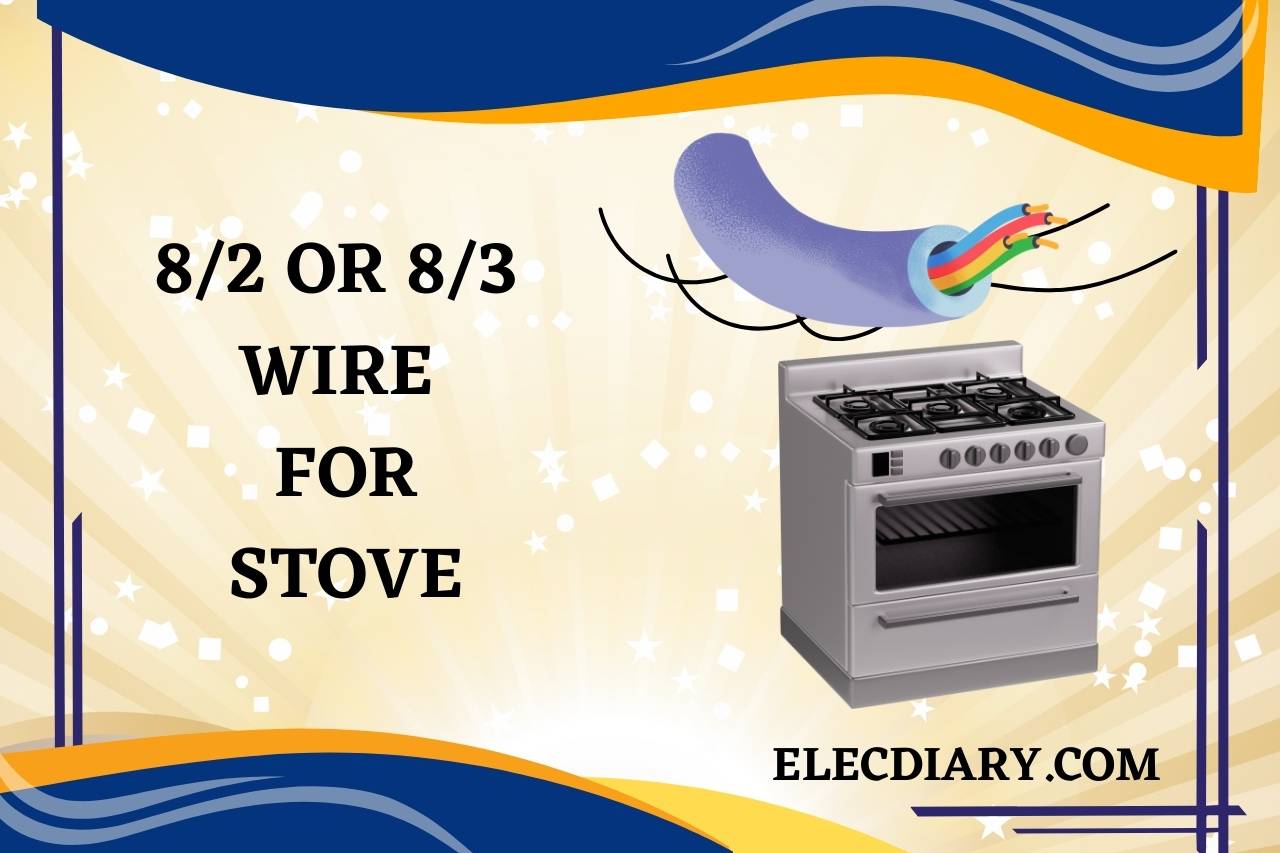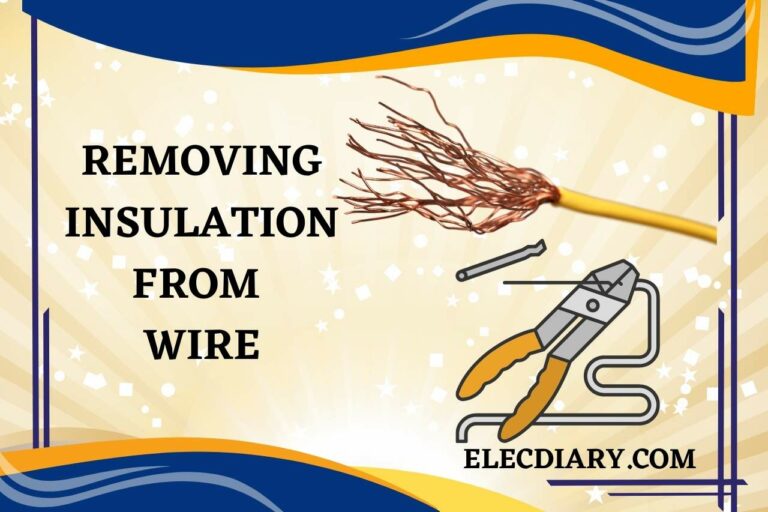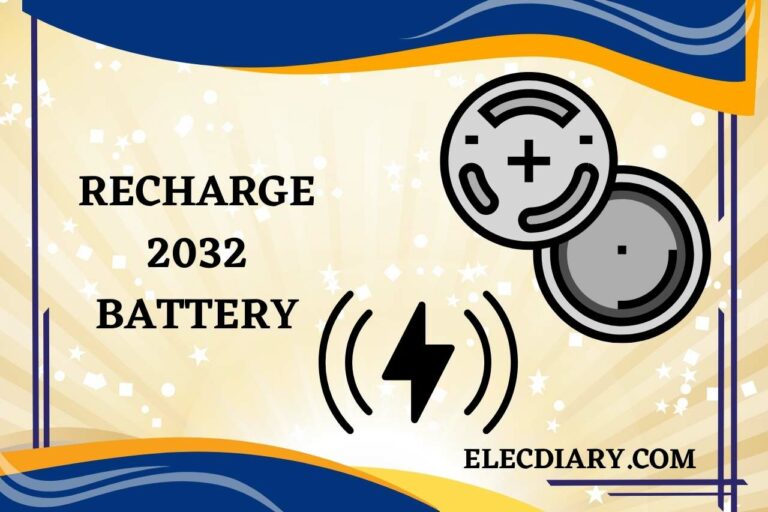8/2 or 8/3 Wire for Stove – Which One Is Safer and More Efficient?
Selecting the right electrical wiring, such as the “8/2 or 8/3 wire for stove”, is crucial for both the safety of the members of your house and the efficiency of your cooker. It becomes a bit complicated if you are planning on doing the deed on your own. As stoves become an indispensable part of our homes, understanding the intricacies of their wiring, like voltage requirements and wire size differences, plays a pivotal role. We will try to help you unravel the nuances of choosing the best wire, assuring optimal performance, paramount safety, and also whether you can manage alone or need further assistance for your kitchen’s centerpiece.
Do I Need 8/2 or 8/3 Wire for Stove?
To determine whether you need a 8/2 or 8/3 wire for a stove, first, you need to consider the appliance’s power requirements and local electrical codes. The best choice for most modern stoves is an 8/3 wire, as it includes a dedicated ground wire for greater safety and flawless function.
- Power Requirements: The wire size you select must safely handle the amperage drawn by your stove. An 8/3 wire offers an additional conductor, making it suitable for present-day stoves that require 240 volts with a separate neutral and ground.
- Safety Precautions: An 8/3 wire provides a ground wire, which is necessary for adhering to safety standards, especially for appliances with high power demands like stoves. This grounding reduces the risk of electrical shocks or short circuits in your stove.
- Local Electrical Codes: It’s in everybody’s best interest when we suggest referring to local codes and regulations before finalizing wire selections. They are there to ensure safety and might have specific requirements that dictate the type of wire needed for stoves.
- Connector Type: The choice between 8/2 and 8/3 may also depend on the type of outlet and plug your stove uses. In our experience, some outlets require that third wire for grounding or neutral purposes.
When installing or replacing wiring, it’s best to always consult with a professional electrician. They can provide guidance tailored to your specific situation, ensuring safety and compliance with all standards and codes of your area.

What is the Difference Between 8/2 and 8/3 Wire?
The primary difference between 8/2 and 8/3 wire, as the names suggest, is that 8/2 wire has two conductors, while 8/3 wire includes three conductors. We have provided some other differences between the two wires.
-
Conductors
- 8/2 Wire: Contains two conductors – one hot and one neutral. Typically, it lacks a dedicated ground, which creates doubt over its security.
- 8/3 Wire: Comprises three conductors – two hot wires and one neutral. In many cases, there’s an additional ground wire, making it safer for high-demand appliances.
-
Applications
- 8/2 Wire: Often used for 240-volt applications where grounding isn’t deemed necessary by local codes, mostly found in outdated appliances.
- 8/3 Wire: Preferred for appliances requiring a separate neutral and ground, ensuring more comprehensive resistance to fire hazards or shocks.
- Safety: The presence of a separate grounding wire in the 8/3 configuration makes it more desirable for applications, especially where grounding is essential to prevent electrical shocks or shorts.
When choosing between 8/2 and 8/3 wires, always consider the specific requirements of your appliance and local electrical standards. Consulting with a professional electrician will further eradicate your doubts on the subject.
How to Choose the Correct Wire Size for a Stove?
The best method to choose the correct wire size for a stove is to look into the appliance’s manual and your local electrical codes. Both those factors are primary in terms of choosing the correct wire size for your stove.
Steps to Determine the Right Wire Size
- Check the Appliance Manual: Every stove comes with a manufacturer’s manual detailing its electrical requirements. This document will specify the recommended wire gauge for your particular model.
- Assess Amperage Needs: Determine the stove’s amperage requirements. Most residential stoves require between 40-50 amps. If your stove demands 50 amps, for instance, you’ll need a wire capable of supporting that current without overheating.
- Local Electrical Codes: Different regions might have varying safety standards. Always refer to your area’s electrical codes, which often dictate wire sizes for various electronic devices.
- Safety Margin: It’s prudent to choose a wire size that offers a bit of a safety margin. For example, if your stove requires 40 amps, you should consider getting a wire that can safely handle up to 50 amps. This may save you from rare cases of electrical injuries due to high-voltage hazards.
- Wire Length: The longer the wire, the greater the voltage drop. If your stove is located far from the electrical panel, you might need to consider a thicker wire to compensate for potential voltage drop.
- Grounding Needs: Always ensure your chosen wire provides for proper grounding. This is essential for safety, preventing electrical shocks or potential jeopardy.
- Professional Consultation: If you are unsure, don’t think twice about consulting with a licensed electrician. Their expertise can guide you in choosing the right wire, protecting your stove and family from accidents.
What Happens If you Use the Wrong Wire Size on a Stove?
Using the wrong wire size on a stove can lead to overheating, electrical inefficiency, and potential fire hazards. We strongly recommend you not to use makeshift or temporary wires even if your stove works.
- Overheating: Inadequate wire gauge can’t handle the stove’s current, causing the wire to overheat. This increases the risk of melting insulation, exposing bare wires which are prone to shock.
- Reduced Efficiency: A thinner wire than needed may result in voltage drops, leading the stove to operate inefficiently and potentially not reach the desired temperature. This may result in reducing your stove’s life considerably.
- Fire Risk: Overheated wires can ignite surrounding materials, posing a fire hazard. Always adhere to safety guidelines and stick to them to prevent such situations.
- Short Circuit: Exposed wires due to melted insulation can cause short circuits, damaging the stove or the entire electrical system of your house, leading to an expensive rebuild.
- Increased Electrical Bills: Voltage drops from undersized wiring can elevate electricity consumption, resulting in higher utility bills.

Can I Use 10/2 Wire for a Stove?
While it’s possible to use a 10/2 wire for certain stoves, it’s not the most suitable or safest choice for most modern units, which often require a 240V connection. We’ll let you know why.
- Voltage Limitation: 10/2 wire typically caters to 120V circuits. Most modern stoves need a 240V circuit, implying a necessity for a 10/3 wire to incorporate the two hot wires, one neutral, and a ground.
- Safety First: Using an inadequate wire might compromise safety, leading to overheating and potential fire hazards, which pose the danger of causing severe injuries.
Our advice is always to consult a trained professional electrician just to be safe. Your stove’s manufacturer guidelines and local electrical codes might not be enough to do complex things on your own. But we hope that you found our guide to be helpful for you and your stove in deciding what type of wire is the best and safest choice.








